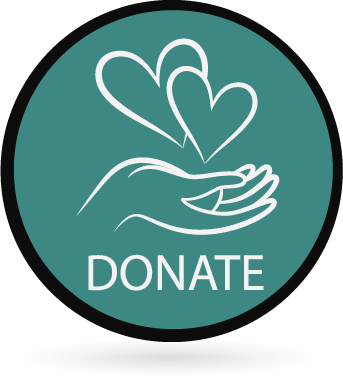Masa Masaar – The Journey
The Journey—Masa Masaar is a project that Open House traditionally organizes with The Spiritual Center of Neve Shalom / Wahat al-Salam and with the invaluable support of the GNRC (Global Network of Religions for Children), a Buddhist Japanese organization, committed to the spirituality of young people worldwide. Masa-Masar was evaluated by the GNRC and published as a highlight project.
This video shows the 2015 group of thirty high school students from two schools, a Jewish and an Arab, participating in Massa-Masar – The Journey.
The Journey is meant to open young Arabs and Jews to the experience and narrative of The Other. As a rule, the young people are exposed only to the narratives and attitudes of their own community. It takes enormous courage, in the Israeli Palestinian context, to bear the pain of what we have done to each other throughout a prolonged conflict. It is natural to become defensive under such circumstances. Listening, acknowledgment, empathy, these are the qualities that we aim to seed in The Journey.
The Journey – 2017
30th of November to 3rd December 2017, we had our Journey-Masa, Masar, for 22 students from Jewish and Arab High Schools. This unique project is in cooperation with Neve Shalom/ Wahat asSalam, spiritual center. Accommodations for the first two nights were in the guest house of Neve Shalom.
Vivian Rabiah and Dorit Shippin together with Elad Vazana prepared the younger counselors and the program.
These were four intense days with traveling to different locations and communities, listening to individuals and groups and gathering for reflection circles every night.
On Thursday, the 30th The Journey began in Ramle, where Open House is. This historic town is both a mixed city of Arabs and Jews with relatively higher percentage of Christian Arabs than the rest of the country, and a multicolored array of Jewish immigrants from Morocco, Tunis, Egypt, Irak, and more recently from India, Ethiopia, Russia and of course many Israeli born Jews and Arabs.
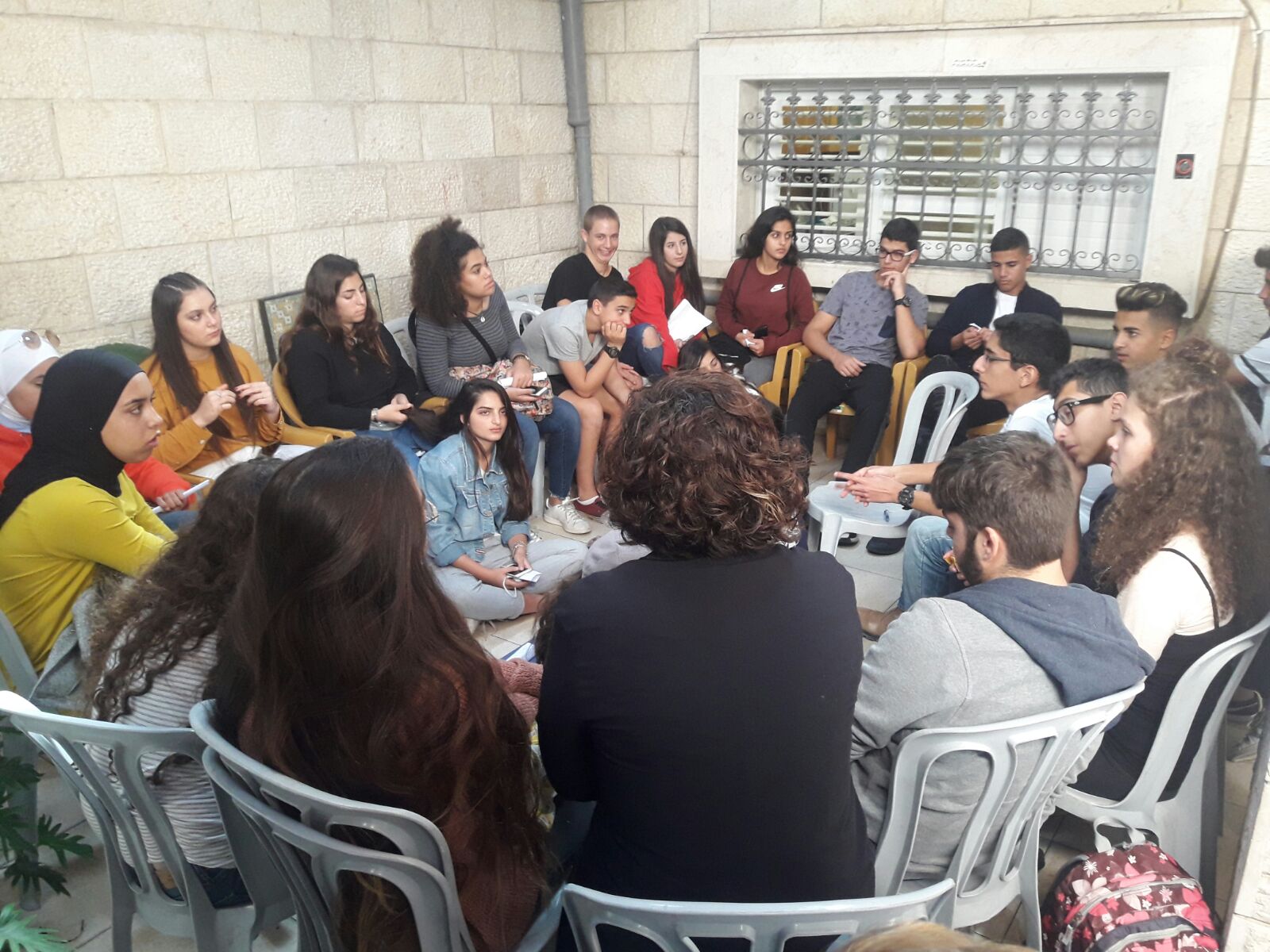
After a visit to the city museum depicting its history, off they went to the market. Nobody coming to Ramle would skip the famous Sukk where the freshness of the produce from the fertile agricultural land surrounding, as well as the cheap prices, are an attraction. And of course everybody rubs shoulders in the crowded market–everybody. That is why it is such a colorful experience.
In Lod (Lydda) which according to the Greek Orthodox tradition is the place of St. George and the Dragon, they saw the old Han (ancient inn) for pilgrims coming to St. George’s Church of Lydda on their way from Jaffa to Jerusalem.
The participants also met with local activists for improving conditions and reducing crime in the town.
On Friday, the 1st of Dec. they headed to Tel Aviv and Jaffa where they visited the ancient port, the old city and met with members of Reut-Sadaka, a ground breaking organization established in 1983, acting for dialogue and equality among Arabs and Jews.
Back in Neve Shalom they had a Shabbat ceremony with grape juice and breaking bread. Then a discussion circle. Finally, music and fun.
On Saturday, the 2nd of Dec. they spent the day in Neve Shaom / Wahat asSalam, learning more deeply about the purpose of the village dedicated to Arabs and Jews living together with their differences of narrative and political approach. They then dedicated most of the day to circles of listening to each other’s inherited narratives. It was a challenging day. Sometimes it seemed that the narratives were irreconcilable and mutually exclusive. And out of that they realized they needed to create, to imagine a vision for our common future.
Silent time in Doumiya (the domed place of stillness) created a space beyond words, which facilitated the process.
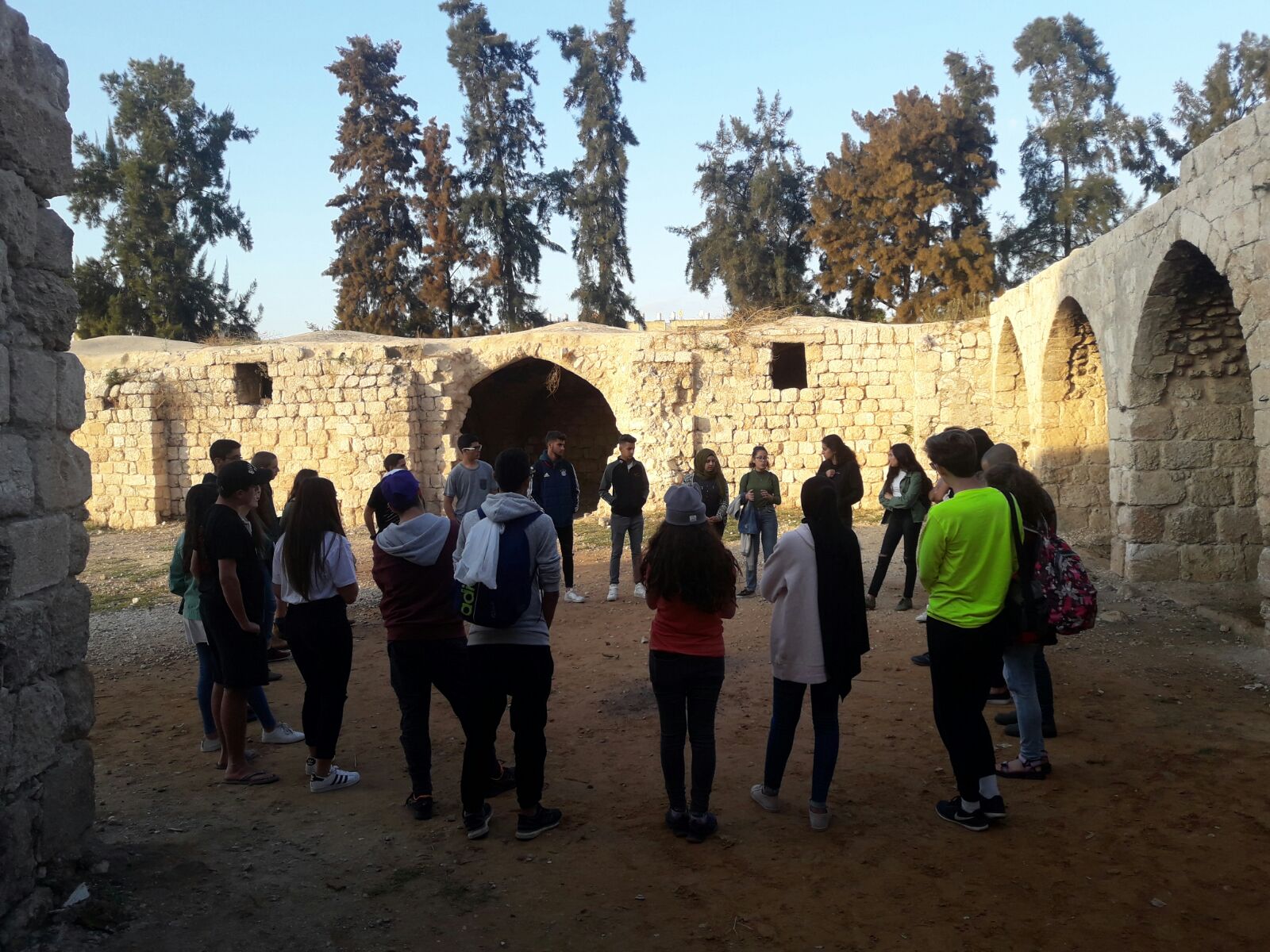
That night they traveled to Jerusalem.
On Sunday 3rd of Dec. the participants walked through Jerusalem neighborhoods. Beginning with Sheikh Jarakh, continuing through Prophets’ Street and proceeding to Sukk Mahneh Yehudah.
In the religious neighborhoods, they met with a Jewish ultra-orthodox woman who is struggling for women’s rights while preserving her observant way of life. Her world with the complexity of her struggle was like opening a door to an unknown world.
After gathering for the summarizing circle with acknowledgments for all this richness, the buses took the journey home.
The Journey – 2016
March 13-16 / 2016
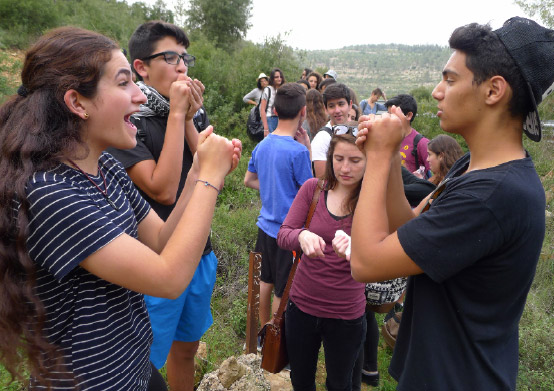 This year’s participants came from the cooperation of 3 high schools: (1) The Christian Orthodox School, (2) Terra Santa School of Ramle and (3) Givat Brenner High School.
This year’s participants came from the cooperation of 3 high schools: (1) The Christian Orthodox School, (2) Terra Santa School of Ramle and (3) Givat Brenner High School.
After much anticipation, our group of students finally met for the 4 – day Journey into Israel’s complex mixed heritage on March 13th. We convened outside the Christian Orthodox School in Ramle in the early afternoon. At this point, any observer would be able to sense the mixed emotions of our students: confusion,excitement, fear, shyness, and laughter.
Our first stop in Ramle was the studio and home of local artist Nihad Dabeet. Here, the students were able to learn about the creative and communal powers of art. After the visit to Nihad Dabeet’s studio, we were welcomed into the “Open House” an exceptional model of Jewish – Arab coexistence. The “Open House” functions as a preschool that embraces young children of all communities (in fact, some of our students attended this preschool themselves).
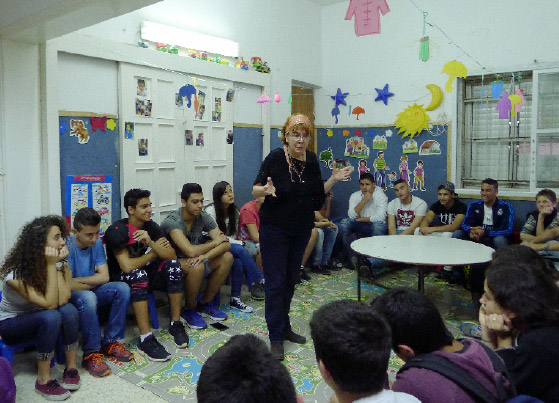
Visit to Open House
Dalia Eshkenazi who grew up with her Israeli Jewish family in what is now the “Open House” founded this center for peace education. Dalia explained to our students how one day, in July 1967, she answered a knock on her front door only to find three exceptional Arab men asking to visit inside the home. The men told Dalia of their own journey and revealed that the home had belonged to their family for several generations years before; at that moment, Dalia faced a choice and she decided to accept the men inside. Ultimately, a strong friendship developed between the two families who together decided to consecrate the home as a center for social justice and integration within Israel. Dalia’s story clearly struck a chord within the hearts of both our Jewish and Arab students’ again, this experience represented a first step on their Journey to discovering the possibility of peace. The night was spent at Wahat al- Salam – Neve Shalom where we enjoyed a delicious dinner, played interactive games, and began to know and understand one another.
The next day was spent in Jerusalem where the students had the opportunity to visit cultural and historical sites of significance to both Arabs and Jews. Through this dual platform, our students began to see how their seemingly separate identities could be easily bridged together through a common history. In Jerusalem, we spontaneously met three women soldiers who told of the struggles serving in a conflict zone, and a male soldier who expressed admiration for our project.
Additionally, we spoke with a Jewish woman of a mixed neighborhood that blessed our mission, and an Orthodox Jewish man who prayed with his infant child. That night, we all came together to celebrate Shabbat dinner at the ecological Essene Farm located in the mountains of Jerusalem.
Before resting for the night at the farm, our youth participated in an activity where they were able to share symbols of their own identities with one another.
Our third day was spent in the beautiful nature of Israel. We began the morning with a relaxed hike through the nature surrounding the Essene Farm, and in doing so, learned the value of appreciation for the environment. After the hike, we returned to Wahat al- Salam – Neve Shalom for our last evening together where we enjoyed a beautiful, traditional Arabic dinner and came together for an exhilarating drum circle. We began our final day with a seminar on the relation of the Abrahamic religions held within the Spiritual Center of Wahat al- Salam / Neve Shalom. Dafna Karta Schwartz spoke of the ways in which our students’ respective religious identities demonstrate a universal human bond.
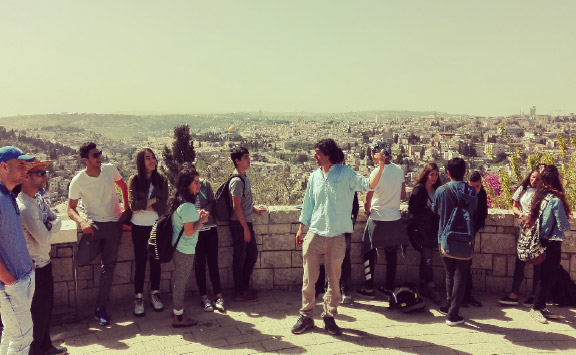
Overlooking the Old City of Jerusalem
Our last day ended in the Jewish village of Nataf with bittersweet emotion. Earlier in the day, we had visited a mosque in the Arab village of Abu Ghosh and later a synagogue in Nataf. Here, the students observed how despite differences in customs and beliefs, fundamental ideas of spirituality could be connected. The Journey ended with a picnic in a local park of Nataf. After eating, we broke out into small groups with the students to discuss their feelings on ending the Journey. Our final goodbyes were made as we all took turns telling what we loved of one another and how we had impacted each other through the Journey. Because we had heard many stories of the injustices and suffering associated with living in a conflict zone, the students eyes opened beyond their typical experience.
This change in perception allowed the young adults to connect with one another despite their previous biases. Ultimately, it was through the process of connection, this Journey with one another, that they reached a vision for Jewish- Arab peace.
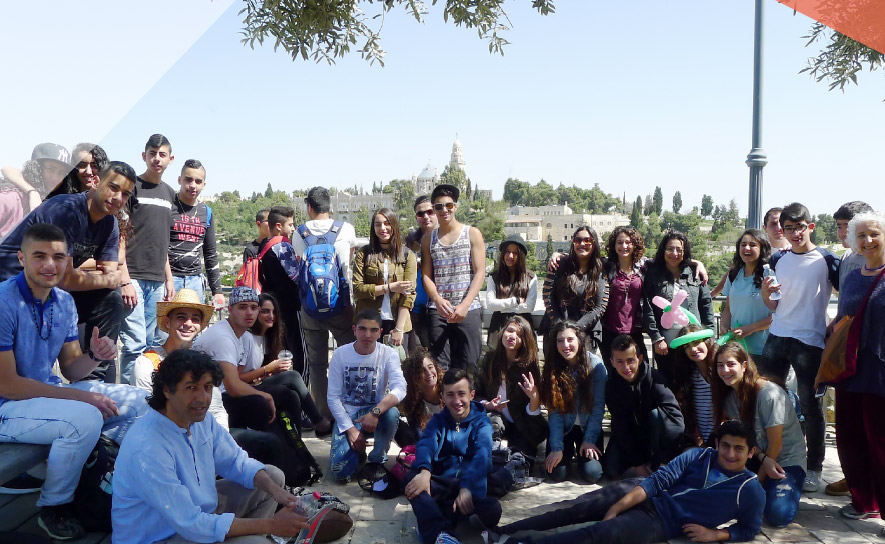
Overlooking Mt. Zion
The Journey – 2012
December 14-15-16 / 2012
By Natasha Biran
The origins of the workshop
As we were nearing the end of 2012 and lighting the last candles of Hanukkah, 41 young Israeli Jews and Palestinians, ages 15 to 17 gathered for The Journey. We were using the beautiful facilities of Neve Shalom, including their hotel, for 3 days. To know that these young people were ready to spend time together after the painful events of the last Gaza War is heartening.
The three day Massa Massar (Journey) leadership workshop was a joint collaboration between The Pluralistic Spiritual Centre of Neve Shalom/Wahat al-Salam (WAS-NS), The Sulha Peace Project and the Open House in Ramla. Its intention was to provide a platform for open dialogue, leadership training skills and the development of genuine heartfelt connection between 20 Israeli Arab and 20 Israeli Jewish youth, ages 14-17. The youth came from cities as diverse as Haifa, Ramla, Lod, Modiin, Jerusalem and WAS-NS itself. The workshop was run in both Hebrew and Arabic.
The first two days took place in WAS-NS and on the final day there was a tour of key cultural and religious sites in Jerusalem.
Methodology
The uniqueness of this leadership workshop was felt from the beginning by the introduction of the devoted group of people who worked tirelessly to ensure that the experience would reach the participants in a way that would have a deep and lasting effect. The facilitators were made up of people involved in peace work such as Elad Vazana who has spent the last ten years working on meetings between both sides. It was also facilitated by participants from previous leadership workshops who continued their work when their workshop finished and returned to facilitate the growth of others. One of these participants, Bissan Salman, age 20 from Ramla described how important it is for her to continuously learn more about those different from her in order to understand ‘the other’. ‘It is a huge puzzle, you need to know all the pieces to fit it together.’
Dafna Karta Schwartz has been a resident of WAS-NS since 1987 and is a key figure responsible for The Pluralistic Spiritual Centre of WAS-NS, the physical space where the workshop took place. The Centre exists to provide a space for encounter activities, study and reflection, based on values of equality, justice and reconciliation. Dafna’s commitment in developing the Pluralistic Spiritual Centre are a reflection of her goal, to stand for a safe space for creating possibilities to bring joy and beauty to others.
This combination of the older and younger generations ensured the authenticity of the experience for the participating youth. In intimate group sessions which split the participants into four, it was clear that the facilitators were there not to give the answers, but to ask their questions and to open a space where the youth felt comfortable to bring their own questions and experiences. Together, they explored what it means to be part of a side, to experience discrimination, to overcome their own personal prejudices. The smaller groups provided a safe space for the youth to share their experiences with their peers. Angie Wahab, age 16 from Ramla shared how she was here to show that not all Arabs are on the bad side whilst Ofir Haimovich, a young Jewish girl from Zikhron Ya’aqov explained how she wanted to open her heart in all directions.
Youth perspectives
The young people brought with them a wide range of experiences in terms of their connection with ‘the other side’, Jewish or Arab. Zoe Kahana, age 14 from Pardes Chana was educated in an Arab and Jewish school and felt blessed to grow up with parents who believed it was right to give her the opportunity to meet others and overcome any stereotypes. She came to the weekend to make friends and to interact with her Arab counterparts in a natural way. ‘I want my friendships to be natural,’ she said, ‘We shouldn’t have to think if someone is Arab or Jewish, just if we get along and want to know each other’.
Andrawes Alkalah, a 15 year old Christian Arab from Ramla has been going to WAS-NS every Summer for the last 9 years. He also attends the Open House in Ramla once a week and feels that the leadership workshop is very important in order to celebrate being human together. He said, ‘It isn’t an option for life to continue the way it is now for Jews and Arabs here. We have to come together to strengthen our connections and understand that everyone is a person, everyone is worthy.’
Neve Shalom/Wahat al-Salam and sharing stories
The participants stayed together in the hotel at WAS-NS and took part in a tour of the village in which they became better acquainted with the village and its inhabitants. The tour, organized by the young adults of WAS-NS who were part of the team facilitating the workshop, highlighted the spiritual philosophy behind the community concerning the nature of peace. It was explained how they believe that in order to create peace on the outside, it’s essential to create it on the inside too. They took part in creating art out of recycled goods, silent prayer in the peace dome and a gathering in the village café with a founding member of WAS-NS who inspired them further by describing the history of the village and the challenges that were overcome.
On the evening of the first day of the workshop, Elad facilitated a life stories evening, where in an atmosphere of quiet respect, the participants were invited to share a story about their life in any way they wished, a story that has affected them in some way. Surprise was felt by all, as several members of the group opened their hearts sharing their innermost fears and experiences with their peers who they had just met that morning. This was testament to the unique environment that had been created throughout the day, and the evening served as a significant reminder of the human emotions that united the youth as one. Tears were shed for the suffering of others, without a second thought if the suffering was of a Jewish person or of an Arab.
The encounters inspired the children to want to create change. Wahiba Mahamad, 16 from Ramla plans to study to become a diplomat when she finishes school. ‘When I think about everything that has happened, I just want to cry but there’s no point. We need to put it behind us and move forward’. Perri Sapir, a 16 year old Jewish boy from Jerusalem felt that the weekend gave him a genuine experience of hanging out with ‘the other side’, having fun together and being young together. He like many of the other participants expressed how he never receives the opportunity to meet with young people who are from ‘the other side’.
Discussing the conflict
On the second day of the workshop, along with delving into the question of stereotypes and the limitations that this creates, the participants took part in physical leadership training activities in the forest. Later in the day the participants were asked to create a timeline, both personal and of their national narrative. This resulted in an in-depth and highly emotional discussion about the conflict, the factors that separate the youth and the parts that bring them together.
Yam Frank, age 16 from Beit Hashmonai felt that the conversation that took part during the timeline activity was very beneficial. ‘I’ve always celebrated Israel Independence Day without considering how Arabs feel. Now I understand that we celebrate because whilst they don’t celebrate because. It’s really opened my eyes to another perspective’.
Vivian Arbia, an encounter group facilitator for the workshop who runs the Open House in Ramla and was one of the leaders of the first Massa Massar program described how she has had to deal with her experience of being an Israeli Arab and the relationship between the two faiths her whole life. Sometimes it’s hard and overwhelming for her to continuously struggle to make a difference but she feels she doesn’t have a choice. ‘There isn’t a difference between my life and my work but I have no other choice. I have to do this.’
Following on from the timeline discussion, the youth participated in a session with the Parents Circle- Families Forum where they watched a video showing the challenging processes of Jewish and Arab adults taking part in dialogue groups. The day was concluded with tribal drumming and dancing around a fire, singing songs together in Hebrew and Arabic.
A tour of Jerusalem
On the last day, the youth went together on a tour of Jerusalem, visiting a view point overlooking one the largest Jewish settlements in the West Bank and the Security Wall. They also explored together the three different parts of the old city- Christian, Arab and Jewish. The tour allowed the youth to see the key areas of the other faiths that they had never had a chance to visit. Nicole Jahshan, a 14 year old Arab teenager from Lod described her excitement at visiting the Western Wall for the first time and how she felt how special it was for the Jewish people. She actually didn’t want to come to the workshop when she first heard about it. ‘I’ve had bad experiences with Jewish people before, there were kids who made me feel bad because I was Arab. I decided to come and it has given me a new perspective that not all Jews are like that. I feel much better about being Arab.
Concluding remarks
In the conclusion of the workshop the participants shared their reflections over the last few days. They expressed the uniqueness of the encounters and that they wished that they had the opportunity to meet together in this way more often. Yael Shay, a young Jewish girl from Modi’in expressed how it was strange for her that everyone doesn’t see ‘the other side’ in a positive way like she does. ‘It’s not obvious and it should be’, she said. Dima Zuvidat, a 17 year old Arab girl from Haifa explained how in Haifa the Jews and the Arabs live peacefully together so she didn’t feel that the workshop would affect her so much. However it made her aware that she also carries pain and she wants to work hard now to overcome the stereotypes in society.
I personally left the workshop feeling inspired and humbled by the youth. I was amazed by their openness and courage to face their own fears and pain and bring all of these feelings to a shared space with those whom they had only recently met. The workshop gave these young people, our young leaders of today, a voice. This voice fills me with hope that there is a way to put the past behind us and move forward with a more positive, humanistic approach. The workshop gave the youth a safe, supported space to understand and share their experiences, and to feel the humanness that connects them, and us all.
The Journey – 2010
 Beginning at Neve-Shalom, the group traveled to Jerusalem, Jaffa and the Galilee. In Jerusalem, the group visited the Dome of the Rock with Rhassan Manasra, a Sufi sheikh, who has been meeting our young people for the last few years. The visit to the Holy Seplechure was with Sr. Carmen from the Sisters of Zion. In the afternoon, I, Dalia, met them, shared with them the story of Open House and took them to the Western Wall.
Beginning at Neve-Shalom, the group traveled to Jerusalem, Jaffa and the Galilee. In Jerusalem, the group visited the Dome of the Rock with Rhassan Manasra, a Sufi sheikh, who has been meeting our young people for the last few years. The visit to the Holy Seplechure was with Sr. Carmen from the Sisters of Zion. In the afternoon, I, Dalia, met them, shared with them the story of Open House and took them to the Western Wall.
At the security check before entering the Wall plaza we had a little incident: when the police saw that the group included Arabs, we were stopped at the line before security check. Of course I tried to explain who the group was and expressed my strong opinion that they should go through security check like everybody else. But the police decided to call the commander of the post. {While we were passing in the streets, we got some cynical remarks from passersby for still believing in co-existence, so by now I was getting a bit upset.} In the meantime, the line started growing from behind. One religious Jewish woman from North African origin realized what was happening and spontaneously shouted to the policemen “let them pass, can’t you see this is humiliating?” Soon the commander arrived and called me outside the security booth. He wanted to hear who the young people were. He was an Ethiopian immigrant with beautiful gentle eyes. After hearing me he said, “I am sorry for the inconvenience. Of course you understand why we must double check. I truly apologize. May God give you strength to continue your work. Your group is free to enter”. And again it seemed to me that in Jerusalem one can meet the unexpected for better or for worse a bit more often than in any other place.
 Since most of our Muslim and Christian participants have never been to the Wall, they were at first somewhat afraid to enter the area of prayer, “what if they see that I am an Arab and they look at me?” Biyan and Manaar, from the Bedouin neighborhood, Gan Hakal, near Ramle, were particularly wary since they were wearing the hijab and a full length black galabiya. So, the Jewish participants enveloped their Arab friends and so we entered the prayer area, the women to the women’s section and the men to theirs. Everybody was eager to stick a note in the Wall, so we were maneuvering through the people. Biyan and Manaar drew no particular attention, maybe because enough observant Jewish women dress similarly or perhaps because the women minded their prayers. On gathering again at the plaza, it seemed to me that there was the excitement of having passed a test of courage.
Since most of our Muslim and Christian participants have never been to the Wall, they were at first somewhat afraid to enter the area of prayer, “what if they see that I am an Arab and they look at me?” Biyan and Manaar, from the Bedouin neighborhood, Gan Hakal, near Ramle, were particularly wary since they were wearing the hijab and a full length black galabiya. So, the Jewish participants enveloped their Arab friends and so we entered the prayer area, the women to the women’s section and the men to theirs. Everybody was eager to stick a note in the Wall, so we were maneuvering through the people. Biyan and Manaar drew no particular attention, maybe because enough observant Jewish women dress similarly or perhaps because the women minded their prayers. On gathering again at the plaza, it seemed to me that there was the excitement of having passed a test of courage.
 One of the more challenging days of the journey was with Moshe from Kibbutz Lohamei Hagetaot {Ghetto Fighters}, and Muhammad from Al Samriya, a destroyed village on the grounds of which the kibbutz is built. Moshe tried to share what it was like to grow as the son of Holocaust survivors in the oppressive silence that hung over the kibbutz. He then took the group to the cemetery of the kibbutz where stood the monument for the relatives of the kibbutz members who perished in the Holocaust. Muhammad also took our young people to the ancestral cemetery of his destroyed village, a cemetery that was wired all around and was not in use since 1948. All that is left of Al-Samriya is the blocked mosque and the not in use cemetery. Moshe and Muhammad seem to have been conducting a dialogue for who knows how long. Moshe says that we have to look forward and create a future and not retain our consciousness in the past. But Muhammad wants an answer “what about my story, my land on which your kibbutz is sitting? I am not asking you to pack your things and go back where you came from, but at least you need to acknowledge that I have rights here and that you drove me out of here and that we need to find a solution for this together.” Moshe understands, he can acknowledge Muhammad’s experience. He even shares this experience with other people, yet he asks Muhammad to understand that he cannot return to his original village.
One of the more challenging days of the journey was with Moshe from Kibbutz Lohamei Hagetaot {Ghetto Fighters}, and Muhammad from Al Samriya, a destroyed village on the grounds of which the kibbutz is built. Moshe tried to share what it was like to grow as the son of Holocaust survivors in the oppressive silence that hung over the kibbutz. He then took the group to the cemetery of the kibbutz where stood the monument for the relatives of the kibbutz members who perished in the Holocaust. Muhammad also took our young people to the ancestral cemetery of his destroyed village, a cemetery that was wired all around and was not in use since 1948. All that is left of Al-Samriya is the blocked mosque and the not in use cemetery. Moshe and Muhammad seem to have been conducting a dialogue for who knows how long. Moshe says that we have to look forward and create a future and not retain our consciousness in the past. But Muhammad wants an answer “what about my story, my land on which your kibbutz is sitting? I am not asking you to pack your things and go back where you came from, but at least you need to acknowledge that I have rights here and that you drove me out of here and that we need to find a solution for this together.” Moshe understands, he can acknowledge Muhammad’s experience. He even shares this experience with other people, yet he asks Muhammad to understand that he cannot return to his original village.

This dialogue is conducted in the Jewish cemetery of kibbutz Lohamei Hagetaot on the fast day of the 9th of Av, with most of our young Jewish participants keeping the fast in the summer heat.
In the evening, back in the hostel in Peki’in, the day’s experiences are being processed and the topic of ‘narrative’ is discussed.
Some of the connections between people on this trip were really inspiring–as religious people, Manaar, a devout Muslim, and Aviad, an observant Jewish boy from Beit Shemesh, discovered that they had a lot in common.
Naturally, fun aspects were also present on this trip like ice-skating {a challenge} and a sea journey in Jaffa after their introduction to this mixed Jewish-Arab city and its history before and after 1948.
On the last day, each person was invited to share how this journey was for them. Our young people expressed their initial fears, their positive feelings about each other now and how they have gone from a state of blindness before ‘The Journey’ to understanding the other side of the story a little better.
 |
 |

 Summer Camp 2023
Summer Camp 2023 Summer Camp 2022
Summer Camp 2022 Summer Camp 2021
Summer Camp 2021 Summer Camp 2019
Summer Camp 2019